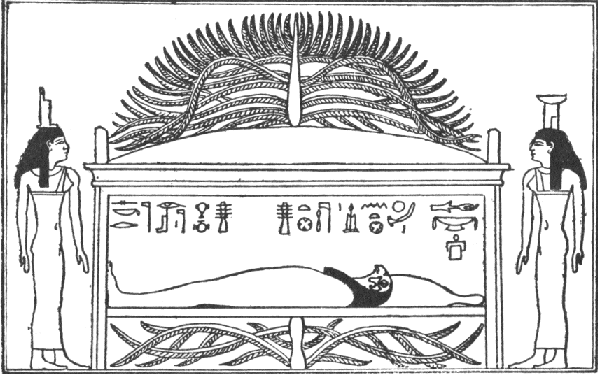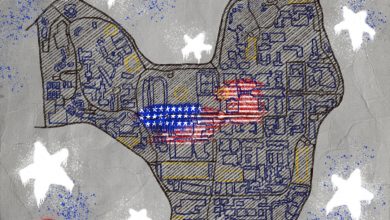The Origins of Misogyny: How History Held Women Back
The one, two, three, four waves of feminism are often considered “new,” “progressive,” or “deviant from history.”
But when you look at history, women have been ruling from the start.
Before male-dominated leadership, women held coveted positions in the Old World. In her book Iron Butterflies: Women Transforming Themselves in the World, Birute Regine draws attention to these ancient, feminine powers. Pre-Roman era, the Egyptian goddess Isis gained a massive cult following. A figure of motherhood and fertility, Isis was hailed as an incredibly powerful figure. Her followers knew she possessed magical powers strong enough to resurrect her husband, Osiris. The devotion to Isis carried throughout centuries. It reached its peak in 83 BCE but eventually fizzled out with of the rise of Christianity in 6 CE.
In general, Ancient Egypt held some of history’s greatest female monarchs. Along with Isis, the ruler Hatsheput obtained huge power. She adapted the grand title and rights as a pharaoh, a king believed to mediate between the humans and the gods. Additionally, historians regard Cleopatra VII as “one of the most powerful rulers Egypt had ever known.” In a time of chaos, the queen was highly respected for managing her country while the Roman Empire attempted to take over.
Other respected females took form in Greek mythology. Aphrodite, the goddess of beauty, and Athena, the goddess of wisdom, shared level thrones with Gods on Mount Olympus. Both goddesses were born unconventionally. Aphrodite sprung from the ocean, while Athena burst from Zeus’ head in battle gear. Their unbelievable yet noteworthy appearances implied the strength of both goddesses, causing both of them to gain esteemed positions in Ancient Greek religion.
Between Isis, Athena, and Aphrodite, there’s no doubt women possessed great power in ancient society. The real question is, what happened between ancient times and the present? When did men take over? When were women pushed back?
The answer goes back thousands of years.
When it comes to pinpointing, there isn’t one, specific event that boosted the power of men and degraded the power of women. Instead, misogyny’s emergence in multiple cultures worked together to create the uneven roles of today.
There’s no doubt about it: misogyny pervades classical Greek writings. Aristotle regarded women not as equals, but as incomplete, deformed males. In dialogues such as Timaeus and Laws, Plato creates inferior women characters against superior male characters. However, despite the attitudes of famous philosophers, traces of equality remained within the power structure. Marriages between husband and wife were seen as a partnership, and women were granted civil rights such as suffrage and property ownership.
Then there’s the issue of agricultural societies. Before, hunter-gatherer societies split equal roles amongst men and women. This shared responsibility diminished as land became more valuable. In America, this change arrived with European influence. Before, Native Americans lived in the communal, hunter-gatherer society. However, cultural exchange altered the equal-gender lifestyle. The times then turned to agricultural societies, where expectations dictated that husbands work while wives stay home. These differently defined parts forever changed the value and status of women.
Moreover, the tale of Adam and Eve is rampant with sexism. The biblical story victimizes Adam. It portrays him as innocent, unfairly punished by Eve’s ignorance, even though he ate the apple out of his own free will. This biased viewpoint undoubtedly led to generalizations between men and women; it suggests that men are “slaves” to women’s requests and women are inherently evil and manipulative. The Genesis section is just a preview of sexism within the Bible. Other passages call for the submission of a women, such as when St. Paul says, “I do not permit a woman to teach or have authority over a man; she must be silent” in Timothy 2:12. Even the holy Moses endorses violence against women with his order “Do not allow a sorceress to live.” From the most popular religion in the Western World, the Bible’s encouragement to silence women most certainly created a culture of hatred towards females.
Misogyny is evident not only in Christianity, but also in Islam. Chapter 4, Line 34 of the Quran instructs a husband to beat his rebellious wife until she obeys his commands. Explicit directions of brutality implies the desire to keep women contained, like objects, and thus encourages hatred towards the gender.
Misogyny, therefore, has various roots. From our examination, you can see one truth: there is no single, accurate origin of the societal hatred of women. However, hindsight is 20/20 and makes another fact clear: in 2015, misogyny should be history. Women have proved themselves throughout history. They are trustworthy citizens, leaders, and members of society. They are strong, hard-working, and caring. It’s time to remember when women dominated and step into those roots.
Now is the time for equality.
Misogyny is history.






Great piece! I encourage the writer to take a closer look at Indian history (South Asia) and the powerful women who ruled over the different eras. From Noor Jehan (Mughal empress) to the Rani of Jhansi ( led the 1857 Mutiny) and Mrs. Indira Gandhi, South Asia has spawned ‘iron ladies’ and continues to do so today. This has a cultural and religious origin, beginning with goddesses such as Saraswati (learning) and Laxmi ( prosperity). Incarnations of Parvati such as Durga and Kali are revered for their strength and ability to rid us from evil.